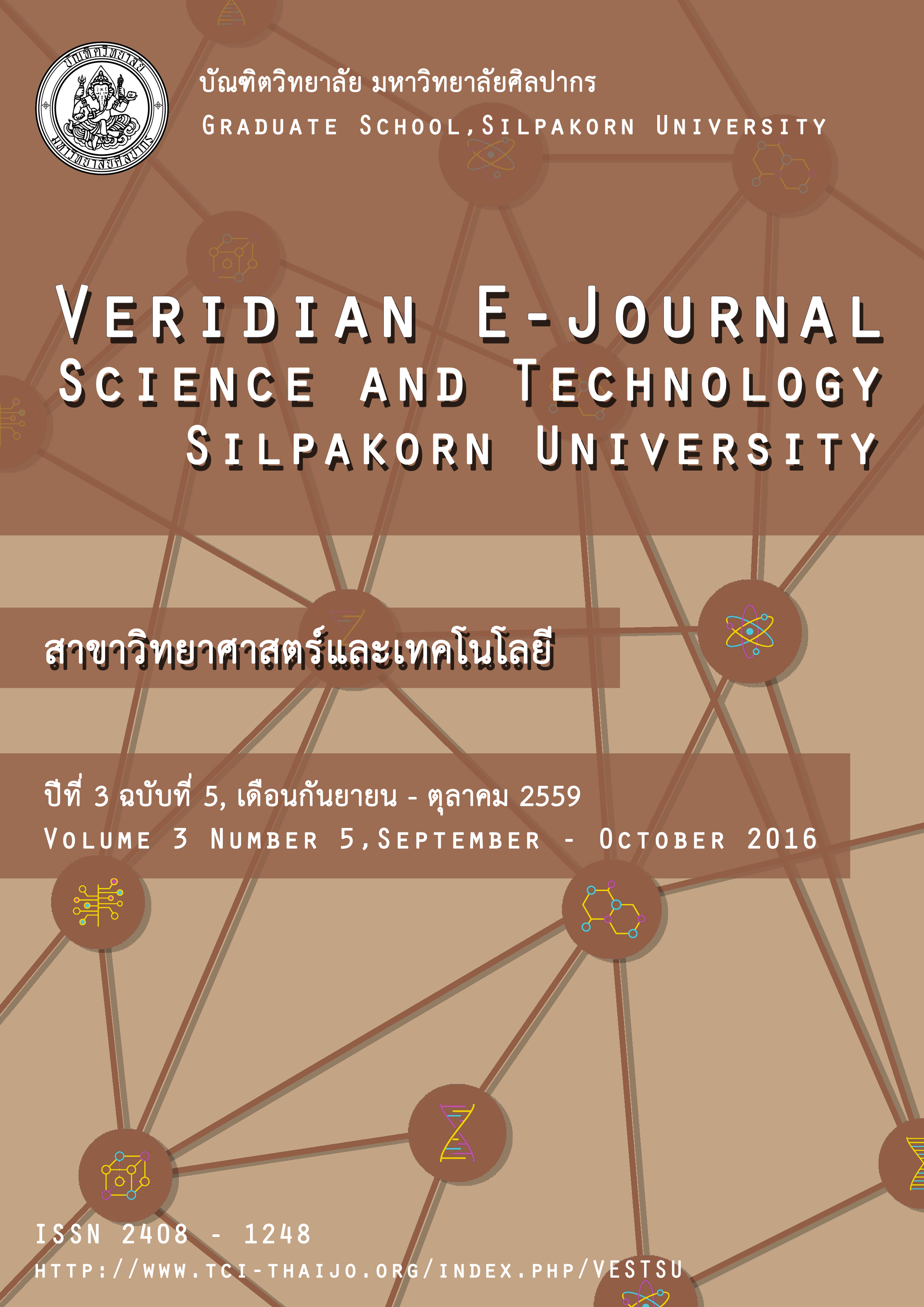การเปรียบเทียบตัวประสานในชั้นรองพื้นสำหรับงานอนุรักษ์จิตรกรรมฝาผนังของไทย
Main Article Content
Abstract
กาวเมล็ดมะขามถูกใช้เป็นตัวประสานในชั้นรองพื้นสำหรับงานอนุรักษ์จิตรกรรมฝาผนังไทยแต่มีข้อเสียคือเมล็ดมะขามหาได้ยากนอกฤดูกาล ไม่สามารถเก็บรักษาได้ในระยะเวลานาน และยุ่งยากในการเตรียม ต่อมาในปี พ.ศ. 2540 ช่างอนุรักษ์จิตรกรรมฝาผนังไทยได้เริ่มนำกาวยางกระถินมาใช้เป็นตัวประสาน เนื่องจากหาซื้อและเตรียมได้ง่าย แต่กาวยางกระถินนั้นเกิดการเสียสภาพได้ในระยะเวลาอันสั้น ในปัจจุบันมีรายงานการใช้ทั้งกาวเมล็ดมะขาม และกาวยางกระถินในงานอนุรักษ์จิตรกรรมฝาผนังในส่วนของชั้นรองพื้นแต่อย่างไรก็ตามยังไม่มีการศึกษาเปรียบเทียบคุณสมบัติของกาวทั้งสองชนิดนี้ งานวิจัยนี้มุ่งเน้นการพัฒนากาวเมล็ดมะขามให้มีประสิทธิภาพมากยิ่งขึ้นในด้านการยึดเกาะ การเตรียม และการเก็บรักษา โดยการสกัดเฮมิเซลลูโลสออกมาจากเมล็ดมะขาม แล้วนำไปใช้เป็นตัวประสาน จากนั้นได้ศึกษาและเปรียบเทียบคุณสมบัติของกาวยางกระถิน กาวเมล็ดมะขาม และกาวเฮมิเซลลูโลสในด้านความหนืด การเสียสภาพลักษณะทางสัณฐานวิทยาและ การเปลี่ยนแปลงทางกายภาพ จากผลการทดลองพบว่ากาวเฮมิเซลลูโลสให้ค่าความหนืดมากกว่ากาวยางกระถิน และมีค่าใกล้เคียงกับกาวเมล็ดมะขาม อีกทั้งยังสามารถเก็บรักษาได้นานกว่ากาวเมล็ดมะขาม และกาวยางกระถิน ดังนั้นกาวเฮมิเซลลูโลสจากเมล็ดมะขามจึงถือเป็นอีกทางเลือกหนึ่งในการนำมาใช้เป็นตัวประสานในชั้นรองพื้นสำหรับงานอนุรักษ์จิตรกรรมฝาผนังของไทย
Tamarind kernel gum has been reported as a binder in the ground layer for Thai mural painting. However, the problems encountered include difficulties in finding out-of-season tamarind seeds, preservation and preparation. In 1997, Thai mural painting conservators have applied acacia gum as a binder because of its convenience to purchase and prepare. Unfortunately, the acacia gum is easy to denature. At present, both tamarind kernel gum and acacia gum have been used as a binder for the ground layer during restoration of Thai mural painting. No study on comparison of the properties between tamarind kernel gum and acacia gum has been reported. This paper focuses on improving the gum from tamarind seeds to provide good adhesion, ease-of-use and long-term preservation. Hemicellulose was extracted from tamarind seeds and used as a binder. In this study, various types of gum, namely acacia gum, tamarind kernel gum and hemicellulose gum, were characterized and compared in terms of viscosity, denaturation, morphology and physical changing. The results showed that hemicellulose gum provided higher viscosity than that of acacia gum and closed to the viscosity from tamarind kernel gum. Moreover, hemicellulose gum could be preserved longer than both acacia gum and tamarind kernel gum. Therefore, hemicellulose gum was identified as a potential alternative as a binder in the ground layer of Thai mural painting.

